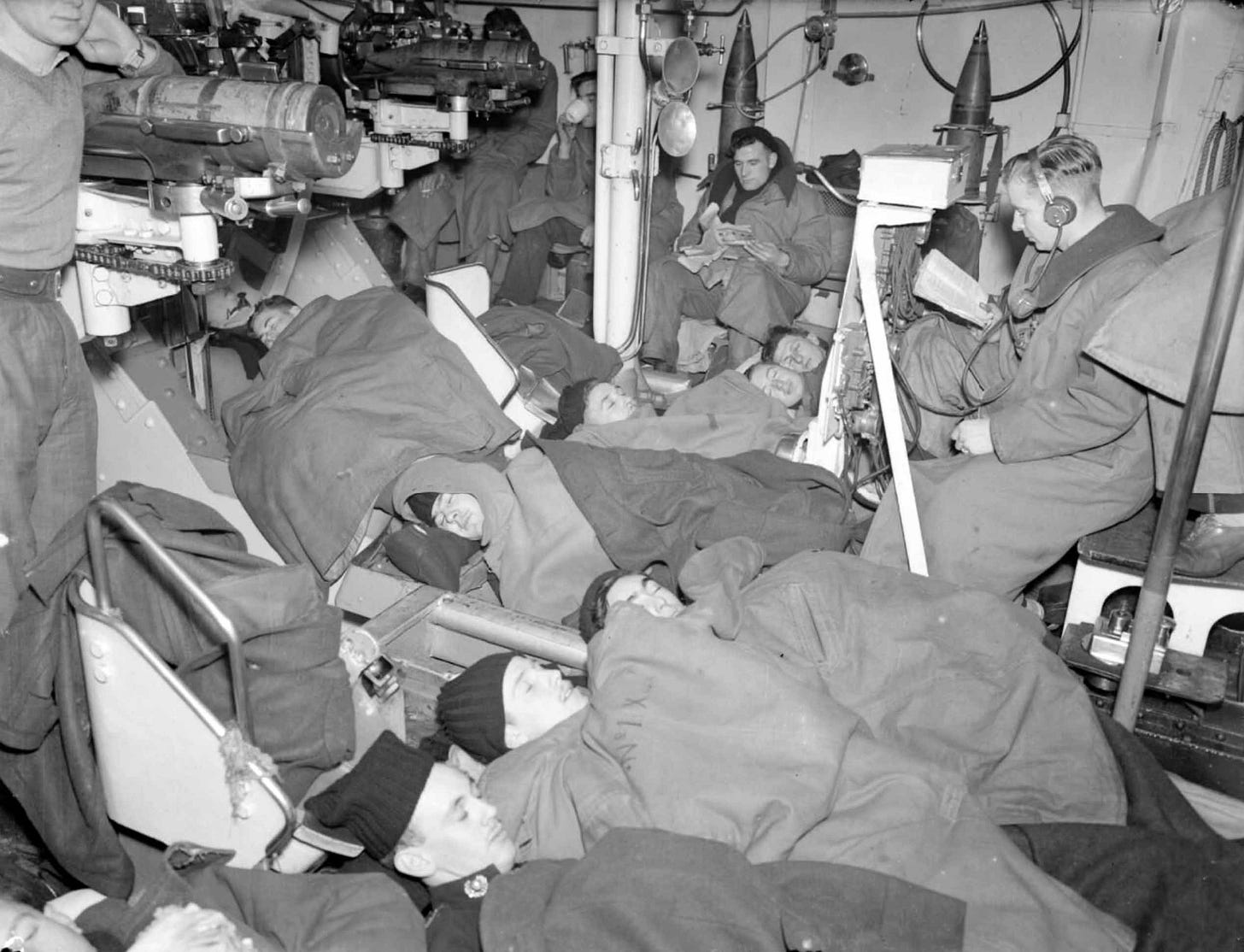Arctic Convoy JW53 battered in gales
25th February 1943: The seas are so heavy that many ships lose deck cargo and suffer structural damage before being attacked by German bombers


Munitions and supplies from the United States, carried by British and American merchant ships to the Soviet Union, were a vital part of sustaining the Red Army. The Royal Navy took the largest part of the escort work, taking the merchant ships through the icy northern seas around the North Cape. Earlier convoys had come under sustained attack from German torpedo planes and bombers, and there was always the risk of German capital ships making an appearance.
Some men on Convoy JW53 would therefore have welcomed the bad weather that they encountered, which shielded them from the enemy. Others might have felt that the treacherous seas were an enemy in themselves.
The storm that hit Convoy JW 53 was exceptional, the mountainous seas bad enough to cause structural damage to large ships. Many ships had deck cargo washed away. Six merchant ships and HMS Sheffield had to turn back and take shelter in Iceland after suffering serious storm damage.

David Craig1 was on the Dover Hill
heavily loaded with Fighter Aircraft, tanks, guns lorries and a large tonnage of shells and high explosives. Our deck cargo was made up of lorries in cases, Matilda tanks and drums of lubricating oil covered with a layer of sandbags, presumably to protect them from tracer bullets. Needless to say we were not very happy about this last item.
Keep reading with a 7-day free trial
Subscribe to World War II Today to keep reading this post and get 7 days of free access to the full post archives.


